#Catalan Crown
Text
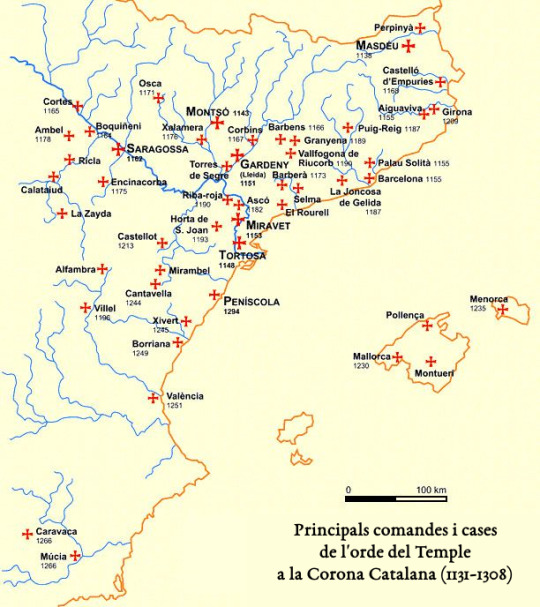
Principals comandes i cases de l'orde del Temple a la Corona Catalana (1131 a 1308).
#mapa#cartografia#Corona Catalana#Catalunya#Templers#Orde del Temple#comanda templera#Catalan Crown#Templars#història#història medieval#Estat templer
1 note
·
View note
Text
i know everyone is goncharov posting but let me just vent for a bit😔
#(this is over some stupid post i saw on a site which shall remain unnamed btw)#literally how evil do u have to be to include aragon in spain when youve excluded all other regions with an independentist movement.#HOW EVIL. like. yeah lets rightfully exclude the former crown of aragon. EXCEPT for aragon of course they were always spain to begin with#like at that point it just becomes an excuse for spanish nationalists. basically 'look nobody acknowledges yall should have more autonomy#so were gonna take even more autonomy away from you bc either way no one cares abt your stupid little movement'#and done by a neighboring region too!!! the backstabbing!!!#god im so fucking done like PLEASE basque and catalan (especially. but also galician) independentist movements P L E A S E fucking.#acknowledge our rights too. like FUCK#z xarre
4 notes
·
View notes
Text


The rap singer Valtònyc (wearing dark green in the first photo) has returned from exile. It's the first time he steps in his homeland Mallorca in almost 6 years.
He was sentenced to 3.5 years of prison because when he was 18 years old he wrote a song where he criticized the Spanish monarchy and uploaded it to YouTube. He wasn't famous and his most listened song on YouTube had 8,000 views, but in Spain it's a crime to say "injuries against the crown", and the laws are often applied more harshly against national minorities (Valtònyc is from the Catalan Countries). His song was found and he had to go to trial over it, and was sentenced guilty of the crimes of injuries against the monarchy, praising terrorism, and threats.
Valtònyc refused to accept the so-called "justice" of the Spanish judicial system, so he decided to escape. He managed to sneak to France unnoticed by the police, and went to Belgium, where there was already a community of Catalan people on exile for their political involvement in the Catalan independence process. He has lived on exile in Belgium these last 5 years and a half.
Had he come back to any Spanish territory, Valtònyc (same as the other exiles) would have immediately been jailed. In fact, Spain issued an international order of extradition, demanding Belgium arrest him and send him to Spain to be imprisoned. But the Belgian courts found that these kind of cases should be allowed under freedom of speech and, instead of sending Valtònyc to Spain, Belgium got rid of their own law that punished "injuries against the crown" as a crime. With no Belgian law to punish him, he was allowed to stay in Belgium. This is a similar process that had happened with other Catalan exiles, who Spain has demanded be extradited multiple times but Belgian law has protected for human rights and freedom of speech reasons.
By the way, the song that got him sentenced to prison had been a commission from the Spanish politician Pablo Iglesias (leader of Podemos, the left Spanish party) for his TV show La Tuerka. Valtònyc has explained that Iglesias never called him, never showed any solidarity nor interest in his case. Iglesias was vice-president of Spain during Valtònyc's exile.
The crimes expired six months ago, meaning he can no longer be imprisoned for it. However, the Spanish courts did not notify him of it (as they should have done), so his lawyer and him just found out.


After saying goodbye to other Catalan people on exile in Belgium, who are not allowed to come back yet (in the photos, shared by Valtònyc on his Twitter, he is saying goodbye to the politicians Lluís Puig and Carles Puigdemont), he has come back home.
He was welcomed by 200 people in his hometown. He has thanked all the people who helped him and showed solidarity. He also reminded that Pablo Hasél (a rap singer from Catalonia) is still in prison for the lyrics of his songs and the contents of his Tweets, sentenced guilty of injuries against the crown and praising terrorism. You can read more about Pablo Hasél's arrest in this post, and an explanation of the tweets and lyrics that got him sentenced in this post.
As we celebrate Valtònyc's return, we cannot forget that Spain has repeatedly ranked number 1 in the whole world for country that sent the most musicians to jail for the content of their music, in 2018 and 2020. By the way all the 14 rap singers condemned to prison for their lyrics were Catalan (Pablo Hasél and the 12 members of the band La Insurgencia from Catalonia, and Valtònyc from the Balearic islands), not one of any other culture group or from any other area. Curious, 100% of the sentenced, when the population of the Catalan Countries is less than 29% of the population of Spain. Wonder why!
#valtònyc#actualitat#freedom of speech#mallorca#illes balears#europe#spain#catalan#freedom of expression#belgium#current events#anti monarchy#rap#rap music#hip hop#human rights#national minorities#minorities#european union#oppression
421 notes
·
View notes
Text
Good Game, Sal
Salma Paralluelo x Barca!Reader
summary: are they enemies, or lovers?

Salma Paralluelo and I, both rising stars of Barcelona's Femeni team, shared more than just a common jersey; we shared a rivalry that burned hotter than the Catalan sun on a July afternoon.
Salma, with her quick footwork and innate goal-scoring abilities, was a product of La Masia, Barcelona's renowned youth academy. Her journey to the top seemed paved with gold, crowned by her recent triumph in the World Cup with the Spanish national team. Me, on the other hand, hailed from a humbled path, I considered my talent raw and untamed, molded through sheer determination and grit.
Growing up in the United States, I’ve played through many unknown summer leagues, clubs mainly filled with boys, school teams, and futsal in the winter months before I put the pen on paper with Washington Spirit at the age of 15.
After four great years with building my talent, creating new friendships, and enjoying my life in the United States Capital, my contract was expiring.
Washington Spirit offered me a renewal, but Barcelona contacted my agent with a proposal that sent my jaw dropping to the floor. The Catalan Club was my dream club while growing up. I’ve admired Alexia Putellas, Ronaldinho, Messi, and Xavi for years. So I followed my heart and denied another four years in Washington DC, so I can accomplish my dream.
However, I had to put in hard work when I arrived in Barcelona. This challenge was needed, since the challenge to score on the pitch fuels my passion. However, I didn’t expect a rivalry to happen WITHIN the club rather than the opponents I’ve played against.
First, it was a constant competition for playing time. Overtime, I’ve thought that I harbored a deep-seated resentment towards Salma, envying her success, her effortless grace on the pitch.
Against Madrid CFF, my debut game in September, I scored a brace that drove the club to win 4-0. Afterwards, I’ve held a record for scoring at least once in a game I’ve had minutes in.
However, Salma seemed to have the upper hand when it came to having a start. I had to swallow my pride every time I had to be her 67th minute substitute. She always hugged me when she would come off, but my body would tense up everytime. Nobody noticed the small resentment for her, except for Salma herself. She started to piece small things together.
“You did great today Niña, I'm impressed by your dribbling and speed in training.” Alexia, or my captain Ale, patted me on the back as we headed into the locker rooms after training. A few days ago, we won the Champions League semi-final against Chelsea. Thanks to a goal from Aitana, Fridolina, and I.
Alexia was a huge advocate for me which made my heart melt. I’ve admired her as a fan but now I am her teammate, so I express my gratitude to her whenever its possible.
“Thank you. I learn from the best people surrounding me.” I smirked and Alexia breathed out a chuckle. Something the girls noticed when I came to the club is how much I’ll compliment or support people on their skills. Aitana said that I've been a light in the dressing room when it comes to boosting morale. This is a reason why people don’t notice a small resentment I held for a-certain-someone on the team.
“Well, Don’t get your hopes up when I say this— but Jona might consider you as a starter for the final— Don’t take that as a guarantee, but your speed will be needed against Lyon's defense” Alexia’s Spanish accent poked through as she held onto my shoulder. The Spanish are very affectionate.
“I won’t get my hopes up— I do take that as a compliment though.” I said.
“Good. We’ve been looking between you and Salma as the third forward in the finale. Since Frido and Caro will have the left and right wing.” Alexia spoke. I felt my stomach turn at her name. Aware that I will have to work harder in training to start in the final, I know Salma will do the same thing.
A week later, my “animosity” towards Salma only intensified when I discovered that Salma will start in the final over me as a striker. Back at my apartment, I’ve cried myself to sleep. I’ve worked hard in training. My tears represented the fear that nobody is seeing the skills and potential I have.
“Hey Y/n” As I walked out the locker room after training one morning, I turned around and saw Salma approaching me. My eyes widened and I turned to walk away in a hurry.
“Hi.” I said quickly as Salma continued to walk beside me. What did she want?
“We should go watch The Challengers movie with Esmee on our day off Sunday. I know you both used to play tennis and such, it looks like a great movie.” Salma hesitantly spoke. My eyebrows knitted together at what she said. I did play tennis for a few years in middle school back in America, but as a hobby not a sport. Esmee told me that she could’ve gone professional at tennis in the Netherlands but chose football instead. The Dutch girl is the only person that knew about my old tennis hobby, so she had to have told Salma about it.
“Um–” I say as we both pushed the glass doors outside into the parking lot. As much as I wanted to say no, express to Salma how much I've resented her, and drive home.. I couldn’t. I felt my heart ache as I looked at the girl who had a shy smile. Wait– huh? Why am I doing that?
“I–I can go with you guys–Just have Esmee text me the details when you guys decide the time.” I said before walking away to my black SUV, my emotions not handling what Salma might’ve said or reacted to my acceptance.
The last few days before Sunday came along. I’ve talked to my best friend, Isla, about everything. She doesn’t live in Spain, since she plays football for Gotham FC, but she had a clear understanding about the community.
After my rant which lasted an hour, Isla said something which made my heart stop for a quick second.
“Are you sure that you hate Salma?” Isla asked over the facetime call.
“Well-No! I don’t hate anybody, I just hate how big of an advantage she has over me.”
“Oh– because it sounds like you’re in love with her–”
“Excuse me?”
“Well the way you’ve talked about Salma reminds me of how I started off with Esther here at Gotham. However it was the other way around. She was in love with me but refused to accept it– so she found reasons to try and hate me instead before she was forced to confront the truth.”
That part of the conversation replayed in my mind for the last few days. Throughout training, throughout the game against Granada that won us the league, it replayed non-stop. It didn’t distract me but I couldn’t look at Salma without questioning if I am in love with her. A subtle shift began to take place within my heart, even if I didn’t want it to happen.
Salma started noticing the small things too. After the Granada game which granted us Liga F champions, she noticed when I wrapped my arm around her and Esmee as we jumped around in the red-colored locker rooms. I’ve noticed that as I started to slowly accept my possible feelings for her, my “resentment” faded away with it.
“Good game, Sal.” I whispered in her ear as everyone posed for a group picture in our “Liga F Champions” shirts. She looked at me with widened eyes before smiling softly.
I found herself drawn to the challenge Salma posed as the Champions League final was coming up. Salma always craved the intensity of their encounters, the adrenaline rush of chasing victory side by side with her rival, just like I did.
By Sunday, the day where Salma Esmee and I will go to the movie theaters, I've accepted it—I finally realized the truth that had been staring me in the face all along. Due to past heartbreak, I didn’t want to fall in love again but here I am in Spain. As I stood in the mirror, looking at the nice casual outfit I've put on (imagine what outfit you want, reader <3) I knew with absolute certainty that what I’ve felt went beyond rivalry with Salma, beyond competition.
It was love.
In that moment of clarity, my resentment melted away. I knew that I couldn't keep denying her feelings any longer, but a fear started to grow inside of my heart. What if it's too late?
Salma did notice my resentment towards her. There were times where I’ve blown her off because of that. I couldn’t blame her if she started to hate me for what I've done to her.
Four hours later, The Challengers movie ended. I’ve sat in-between Esmee (on my left) and Salma (on my right) in the movie theater. The movie was good but I had the urge to look at Salma at times. Once, I looked down at her hand that wasn’t too far from mine. As much as I wanted to reach to hold her soft hands, I couldn’t do it. What if she pulled away? What if things would’ve been awkward between us? I didn’t risk it.
When we hugged Esmee as she left the theater, it was Salma and I in the parking lot. I could’ve said bye and left too, but Salma wanted to say something to me. Esmee and her gave each other an unknowing glance, so I believe Esmee might know what Salma is feeling.
“Y/n, Why do you hate me?” Salma frowned. My heart broke as I bit my lip in nervousness.
“I don’t.” I said I looked at her with a sad smile.
“Yes you do. Every time I wanted to talk to you at practice, you always ran away to talk to someone else. I’ve noticed that you’re the only person that never congratulated me separately after a goal. I’ve seen the way you’ve brightened up people’s days with your compliments, love, and hugs. Why can I not have that Y/n? Did I do something to you for you to hate me? Just tell me because I don’t want to start off next season knowing that you might hate me for something I might’ve done.” Salma took my left hand and held it with both of her soft, moisturized hands as she looked me in the eyes.
A tear fell out of my left eye as I felt guilty. I’ve fucked up. I’ve hurt Salma and she doesn’t know why— I need to tell her how I feel.
“Salma, I don’t hate you at all. I am so sorry for what I've done to you. All you did—really—was be great on the pitch. When I came to Spain, I noticed how loved you were by everyone. You had the minutes, skills, awards, and recognition that I could dream of having. However— I’ve admired you more than everyone else at the same time. I know that's hard to accept due to what I've done to you, but I felt like you were too good for me. I look at you more than everyone else. I wanted to hug you and congratulate your success with you but the vulnerability scared me. I’ve been hurt before so in order to protect my feelings, I’ve covered it up with resentment— Salma, I am in love with you.” By the time I told her that I love her, tears poured down my cheeks and Salma held me in a hug, tightly, as she cried too.
“Y/n, I am in love with you too. That's why it hurt me when I believed that you might’ve hated me.” Salma said through her tears.
“I am so sorry–seriously. I don't hate you. I love you. I will never hurt you like that again, I swear.” I said.
After that night, we started over and became lovers. Our undeniable bond blossomed between us. The team adored our relationship and were happy for us. I did keep my promise, I never hurt her again. I’ve found love in giving my love to her without the fear of getting hurt. After the debut game in the 24/25 season, we walked off the pitch hand in hand, my heart fluttered as I know this is the beginning of our longtime relationship.
<3
#barcelona femeni#salma paralluelo#woso community#fc barcelona#woso fanfics#woso x reader#la roja#aitana bonmati
134 notes
·
View notes
Text

"The most notable players in Palaiologue politics were the empresses Yolanda-Irene of Montferrat and Anna of Savoy, and on the whole their record is woeful: Yolanda-Irene of Montferrat, second wife of Andronikos II, was unable to comprehend the succession rights of her eldest stepson, Michael IX, and since her husband remained obstinately unmoved by her representations she flounced off with her three sons to Thessalonika where she kept a separate court for many years from 1303 to her death in 1317. From her own domain she issued her own decrees, conducted her own foreign policy and plotted against her husband with the Serbs and Catalans: in mitigation, she had seen her five-year-old daughter married off to the middle-aged Serbian lecher Milutin, and considered that her eldest son John had been married beneath him to a Byzantine aristocrat, Irene Choumnaina. She died embittered and extremely wealthy.
When Yolanda’s grandson Andronikos III died early, leaving a nine-year old son John V and no arrangements for a regent, the empress Anna of Savoy assumed the regency. In so doing she provoked a civil war with her husband’s best friend John Kantakouzenos, and devastated the empire financially, bringing it to bankruptcy and pawning the crown jewels to Venice, as well as employing Turkish mercenaries and, it appears, offering to have her son convert to the church of Rome. Gregoras specifically blames her for the civil war, though he admits that she should not be criticised too heavily since she was a woman and a foreigner. Her mismanagement was not compensated for by her later negotiations in 1351 between John VI Kantakouzenos and her son in Thessalonika, who was planning a rebellion with the help of Stephen Dushan of Serbia. In 1351 Anna too settled in Thessalonika and reigned over it as her own portion of the empire until her death in c. 1365, even minting her own coinage.
These women were powerful and domineering ladies par excellence, but with the proviso that their political influence was virtually minimal. Despite their outspokenness and love of dominion they were not successful politicians: Anna of Savoy, the only one in whose hands government was placed, was compared to a weaver’s shuttle that ripped the purple cloth of empire. But there were of course exceptions. Civil wars ensured that not all empresses were foreigners and more than one woman of Byzantine descent reached the throne and was given quasi-imperial functions by her husband.
Theodora Doukaina Komnene Palaiologina, wife of Michael VIII, herself had imperial connections as the great-niece of John III Vatatzes, and issued acts concerning disputes over monastic properties during her husband’s reign, even addressing the emperor’s officials on occasion and confirming her husband’s decisions. Nevertheless, unlike other women of Michael’s family who went into exile over the issue, she was forced to support her husband’s policy of church union with Rome, a stance which she seems to have spent the rest of her life regretting. She was also humiliated when he wished to divorce her to marry Constance-Anna of Hohenstaufen, the widow of John III Vatatzes.
Another supportive empress consort can be seen in Irene Kantakouzene Asenina, whose martial spirit came to the fore during the civil war against Anna of Savoy and the Palaiologue ‘faction’. Irene in 1342 was put in charge of Didymoteichos by her husband John VI Kantakouzenos; she also organised the defence of Constantinople against the Genoese in April 1348 and against John Palaiologos in March 1353, being one of the very few Byzantine empresses who took command in military affairs. But like Theodora, Irene seems to have conformed to her husband’s wishes in matters of policy and agreed with his decisions concerning the exclusion of their sons from the succession and their eventual abdication in 1354.
Irene and her daughter Helena Kantakouzene, wife of John V Palaiologos, were both torn by conflicting loyalties between different family members, and Helena in particular was forced to mediate between her ineffectual husband and the ambitions of her son and grandson. She is supposed to have organised the escape of her husband and two younger sons from prison in 1379 and was promptly taken hostage with her father and two sisters by her eldest son Andronikos IV and imprisoned until 1381; her release was celebrated with popular rejoicing in the capital. According to Demetrios Kydones she was involved in political life under both her husband and son, Manuel II, but her main role was in mediating between the different members of her family.
In a final success story, the last Byzantine emperor, Constantine XI, owed his throne to his mother. The Serbian princess Helena Dragash, wife of Manuel II Palaiologos, in the last legitimating political manoeuvre by a Byzantine empress, successfully managed to keep the throne for her son Constantine and fend off the claims of his brother Demetrios. She arranged for Constantine’s proclamation as emperor in the Peloponnese and asserted her right to act as regent until his arrival in the capital from Mistra in 1449.
Despite the general lack of opportunity for them to play a role in politics, Palaiologue imperial women in the thirteenth century found outlets for their independent spirit and considerable financial resources in other ways. They were noted for their foundation or restoration of monastic establishments and for their patronage of the arts. Theodora Palaiologina restored the foundation of Constantine Lips as a convent for fifty nuns, with a small hospital for laywomen attached, as well as refounding a smaller convent of Sts Kosmas and Damian. She was also an active patron of the arts, commissioning the production of manuscripts like Theodora Raoulaina, her husband’s niece. Her typikon displays the pride she felt in her family and position, an attitude typically found amongst aristocratic women.
Clearly, like empresses prior to 1204, she had considerable wealth in her own hands both as empress and dowager. She had been granted the island of Kos as her private property by Michael, while she had also inherited land from her family and been given properties by her son Andronikos. Other women of the family also display the power of conspicuous spending: Theodora Raoulaina used her money to refound St Andrew of Crete as a convent where she pursued her scholarly interests.
Theodora Palaiologina Angelina Kantakouzene, John Kantakouzenos’s mother, was arguably the richest woman of the period and financed Andronikos III’s bid for power in the civil war against his grandfather. Irene Choumnaina Palaiologina, in name at least an empress, who had been married to Andronikos II’s son John and widowed at sixteen, used her immense wealth, against the wishes of her parents, to rebuild the convent of Philanthropes Soter, where she championed the cause of ‘orthodoxy’ against Gregory Palamas and his hesychast followers. Helena Kantakouzene, too, wife of John V, was a patron of the arts. She had been classically educated and was the benefactor of scholars, notably of Demetrios Kydones who dedicated to her a translation of one of the works of St Augustine.
The woman who actually holds power in this period, Anna of Savoy, does her sex little credit: like Yolanda she appears to have been both headstrong and greedy, and, still worse, incompetent. In contrast, empresses such as Irene Kantakouzene Asenina reflect the abilities of their predecessors: they were educated to be managers, possessed of great resources, patrons of art and monastic foundations, and, given the right circumstances, capable of significant political involvement in religious controversies and the running of the empire. Unfortunately they generally had to show their competence in opposition to official state positions. While they may have wished to emulate earlier regent empresses, they were not given the chance: the women who, proud of their class and family, played a public and influential part in the running of the empire belonged to an earlier age."
Byzantine Empresses: Women and Power in Byzantium AD 527-1204, Lynda Garland
#history#women in history#historyedit#queens#empresses#byzantine empire#byzantine history#medieval women#13th century#14th century#15th century#historyblr#historical figures#byzantine empresses#irene of montferrat#anna of savoy#helena dragas#Theodora Doukaina Komnene Palaiologina#Irene Kantakouzene Asenina#Helena Kantakouzene
58 notes
·
View notes
Photo
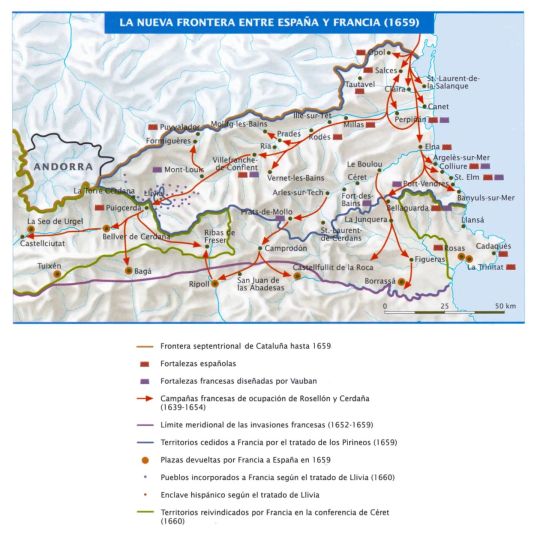
The new border between Spain and France, 1659.
via cartesdhistoire
Source: “Atlas de Historia de España”, Fdo García de Cortázar, Planeta, 2005
Within the framework of the Thirty Years' War, France declared war on Spain in May 1635. Starting in 1639, the French army invaded Roussillon, beginning with the occupation of the fortress of Salses. Richelieu fueled the revolt of the Catalans against Philip IV (started in June 1640), granting the insurgent leaders and troops the protection of French sovereignty (recognized by the insurgents in January 1641). Catalonia's return to Spanish obedience was effective only in October 1652 when Barcelona surrendered.
The fatigue produced by the French occupation, whose army was as burdensome or more burdensome than the Spanish and whose policy was more absolutist and inconsiderate than that of Olivares, alienated the population from the French, but Richelieu's move later served Louis XIV.
Indeed, the Peace of Westphalia (1648) did not put an end to the Franco-Spanish War, which ended with the defeat of Las Dunas (June 14, 1658). June 25, 1658, was the “folle journée” of neighboring Dunkirk: the city, Spanish in the morning, was taken by the French at noon and they handed it over to their ally England in the afternoon (it will be definitively French in 1662) .
The Peace of the Pyrenees (November 1659) meant the loss of Roussillon and Upper Cerdanya, with the establishment of the "dean border of Europe" between France and Spain. It also meant the definitive end of Spanish hegemony. On the other hand, one of the clauses of the treaty, which agreed to the marriage of Louis by a financially exhausted country), would later justify French interventionism in the Netherlands and, above all, would pave the way for the Spanish Crown to fall at the end of the century to the Bourbons, the current reigning dynasty in Spain.
50 notes
·
View notes
Text


So usually for 6th of January in Spain there's this dessert, that has a king figure inside and a bean. If you find the king you get to wear a paper crown. If you find the bean, you pay for it.
But finally someone made a Republican version :D.
(In Catalan it says "no king no crowns". Instead there's a caganer and a barretina to wear)
41 notes
·
View notes
Text

Catalan Civil War 1462-1472
The Catalan Civil War, also called the Catalonian Civil War or the War against John II, was a civil war in the Principality of Catalonia, then part of the Crown of Aragon, between 1462 and 1472.
#medieval#knights#man at arms#history#armour#flags#civil war#catalan#barcelona#art#europe#european#iberian peninsula#spain#middle ages#knight#home d'armes#nobles de primer ordre#banderes#guerra civil#la cavalleria#cavalleria#guerra#war#weapons#nobleman#cavalry#catalonia#catalonian#aragon
94 notes
·
View notes
Text
Antoni Gaudi i Cornet, Dragon Door, 1884-87

Entry to the Finca Guell, Pedralbes 7 Avenue, Les Corts de Sarrià, Barcelona, Spain.
Wrought iron.
"The Dragon Door of the Finca Guell has to be considered a perfect testimony to the artistic quality of the Catalan works in wrought iron. This door is on a pillar of bricks and natural stone and opens in a singular vertical axis. The dragon represents Ládon, guardian of the Hesperus garden. By order of the goddess Juno it had to guard the golden apples in that garden. When Hercules defeated the monster it transformed into a constellation. Gaudi placed the door under an orange tree that crowns the pillars and is a symbol of great prosperity."
Scanned and quoted from the book "Art Nouveau" by Gabriele Fahr-Becker.
4 notes
·
View notes
Note
I'm sooooo tempted to reply to Americans on twitter arguing about race about Canarians being African and not European (Castillian) but honestly I think their brains would melt learning about the colonization, genocide and forceful assimilation of the Berber indigenous peoples of the Canary Islands by the Crown of Castille.
I am not an expert on this topic, but as I understand it, Canarians are some of the Spanish (as in the country) citizens who feel the most distant from Spain itself (even more than Catalans and Basque). There have even some attempts to revive the old Guanche religion. I was quite surprised when I learned about that.
20 notes
·
View notes
Text





Tonight is the Nit de Sant Joan (Saint John's Eve Night or Midsummer Night), a holiday widely celebrated in the Catalan Countries with bonfires and fireworks on June 23rd.
It's the summer solstice, with the shortest night of the year. Traditionally, Sant Joan has been seen as a kind of new year, with many rituals to bring good fortune for the next year. The most famous of these rituals is jumping over a bonfire, but in the last 10 years more or less it has become less common because many towns and cities are passing laws to ban people from making bonfires on the streets or making the necessary paperwork so tedious that people are discouraged from it.
The photos on this post are from Xàbia (in the Central Valencian Country), where the bonfires are still allowed and encouraged by the City Council. A unique element to Xàbia is that its tradition is for all young people to jump over the bonfire wearing a flower crown made of myrtle, which is in bloom in this time of the year. They jump over all the bonfires and, when they reach the last one (the largest bonfire), they make a wish, take the myrtle crown off, and throw it to the flames. This is said to free them from illness and bad luck for the next year.
Photos from La Marina Plaza and Comunitat Valenciana. Information from festes.org.
#sant joan#tradicions#xàbia#país valencià#midsummer#bonfire#bonfires#summer solstice#cultures#culture#valencian#europe#travel#wanderlust#saint john#saint john's day#fire#summer#superstition#folk culture#flower crown
34 notes
·
View notes
Text
Real Madrid are champions again
Real Madrid have been crowned La Liga champions for a record-extending 36th time after beating all but relegated Cadiz 3-0.
Real needed four points from their remaining games, but with Barcelona losing to their Catalan rivals Girona 4-2, who have completed a double of them, this made mathematically sure Carlo Ancelotti’s men can’t be caught at the top of the La Liga table.
It’s been an…

View On WordPress
#Carlo Ancelotti#Champions League#Chelsea#england#European football#football#Google#Jude Bellingham#La Liga#Manchester City#Real Madrid#Sports#The Sports Buff#yahoo
4 notes
·
View notes
Text
Kings of Mallorca out of the islands
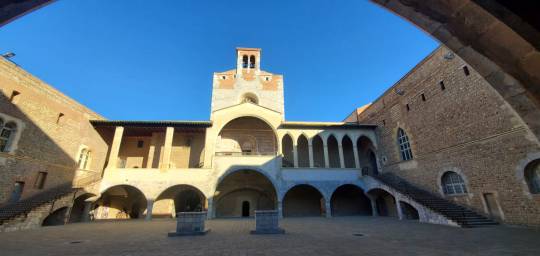
The Palace of the Kings of Mallorca was built by King Jaume II in Perpinyà in 1276, when he assumed the crown of the new kingdom established ten years earlier by Jaume I the Conqueror.
It was the main centre of power for the territories that the new kingdom brought together: the Balearic Islands, the counties of Roussillon and Cerdanya, the lordship of Montpellier, inherited by Jaume I from his mother, Maria, and other fiefs north of the Pyrenees.
Gardens and several chapels were built in the palace, which is protected by powerful walls and a moat. These were consecrated when the complex was completed around 1309, even while King Jaume II of Mallorca, who suffered the temporary loss of his island territories to his uncle, Alfonso III of Aragon, during his reign.
When the islands were recovered around 1291, following the death of the Aragonese king and an arbitration decision by the papacy, James II continued to build the kingdom both in Mallorca and in Roussillon. He was able to enjoy the completed fortress for only two years, as he died in 1311 and was succeeded by his son Sanç.
Sanç I of Mallorca, who became king when his older brother renounced the crown to become a Franciscan friar, continued his father's work and began to build a naval power based on the insularity of most of his kingdom. He clashed with the institutions of the capital of Mallorca.
He died childless in 1324, and was succeeded by his nephew as Jaume III, who immediately assumed vassalage to his relative, King Pere IV of Aragon, whom he supported in the conquest of Sardinia and in the war with the Republic of Genoa.
The Crown of Aragon wanted to annex the kingdom again. Pere IV seized the islands in 1343 and the trans-Pyrenean counties in 1344. Jaume ceded the rest of the baronies to the King of France in exchange for support to recover his kingdom.
The Mallorcan royal dream ended at the Battle of Llucmajor in 1349, certified by the death of Jaume III in the same year. His son claimed the crown of the short-lived kingdom under the name of Jaume IV, but was unsuccessful and his territories were reincorporated into the Crown of Aragon.
After this, the palace of the kings of Mallorca in Perpinyà lost its importance and was only a royal residence when the Catalan-Aragonese monarchs visited their territories in what is now Northern Catalonia.
The wars between the Aragonese and French crowns throughout the 15th century meant that the palace-fortress centralised the defence of the territory. Between 1538 and 1587, Kings Carlos I and Felipe II of Spain enlarged the enclosure with brick walls.
The Treaty of the Pyrenees (1659), by which Spain ceded the former Catalan counties of Rosselló, Cerdanya, Vallespir and Conflent to France, ushered in the French occupation. During the occupation, the military engineer Sébastien Le Prestre, first Lord and then Marquis of Vauban, reinforced the defensive system of what is still today a partially military enclosure.
4 notes
·
View notes
Text
Lemme show y'all the Crowning achievement of my Spiralverse HCs, which is this of every world's numerous dialects, made purely so that I can know which OC speaks what!
(Sidenote: as per usual, worlds that're completely original are in purple, worlds that're simply reimaginings are in pink, and worlds that I simply renamed are in green!)
Lemuria: Lemurian, Eldritchic
Heroica: Heroic (transatlantic accent)
Empyrea: Gachachen (Armenian), Alphoili ena (Georgian), Kalamari (Azerbaijani)
Grizzleheim: Bjørnsk (Danish), Ulvsk (Norwegian), Korpska (Swedish), Villisvínka (Icelandic)
Darkmoor: Vampyruiu kalba (Lithuanian), Huntsi keel (Estonian), Notekšu valoda (Latvian)
Polaris:
Morçais (French), Manchotasque (Monégasque)
Nesti yazyk (Russian), Mors’kyy levska (Ukrainian)
Tülkizaq (Kazakh), Tyulencha (Uzbek)
Moosekha (Yakut)
Gamassa:
Chessova- Obsidiūm, Ivornish, Garnissi
Suitsia- Heartesh, Spadettic, Clubivian, Diamantine
Tilasia- Dicenese, Dominocco
Tarotte- Swordinic, Pentaclese, Chalusian, Wandirine
Karamelle: Mausch (German), Mollands (Dutch)
Avalon: Arthraeg (Welsh), Sionhlig (Scottish Gaelic), Broclge (Irish Gaelic), Weasewek (Cornish)
Marleybone: Marlish (English), Sions (Ulster Scots), Loscannge (Irish)
Monquista: Tiellano (Spain Spanish), Cálidês (Portuguese), Verdalan (Catalan)
Coloratura: Purpurīm, Caerulic, Viridian, Flavish, Aurantesse, Rubinese
Dragonspyre: Ogŭnski (Bulgarian), Kriloski (Serbian)
Vitalia: Janeize (Genovese), Altoscan (Tuscan), Trinitalian (Sicilian), Purapoletano (Neapolitan)
Aquila: Aetóniká (Greek), Vulturīm (Latin), Trojan (Turkish)
Mirage:
Qhati (Levantine Arabic), Jamalījī (Gulf Arabic)
Rubâhsī (Fārsī), Mushrī (Darī)
Yılanili (Hittite), Faresiçe (Istanbul Turkish)
Babumerian (Sumerian), Sehê bejîdî (Kurdish), Ealiawi (Bedawi)
Krokotopia: Krokotopian (Ancient Egyptian), Hedjiin (Nubian), Manremənkhēmi (Coptic)
Zafaria:
Manwiza (Manyika), Mbidau (Ndau)
Sepiltwa (Setswana), Selaminko (Sesotho)
Indlodo (Mopondo), Imvumbu (Thembu)
KwaIbhubelu (KwaZulu-Natali Zulu), Intshaal (Transvaal Zulu)
Amakhanle (Ndebele), Óbhéjanele (Matabele)
Mooshu:
Guānyù (Mandarin)
Akago (Japanese)
Sanguk-eo (Korean)
Hüyyol (Mongolian)
Dbaas (Tibetan)
Qīng wá (Cantonese)
Vajong (Hmong)
Rajah:
Bāghala (Bengali)
Ṭālpiṉil (Tamil)
Mōrabi (Punjabi)
Kosūr (Kashmiri)
Sing-haya (Assamese)
Yago:
Tiếng Đồi (Vietnamese), Phéasa Veal (Khmer), Phéasa Rồng (dragon-riders)
Phasa Lm (Thai), Phasa Thidin (Laotian), Raybhasa (Burmese), Phasa Kyaal (helephants)
Bahasa Bunga (Indonesian), Bahasa Pasir (Malay), Tagbato (Tagalog)
Wallaru: (to be updated)
Celestia: Vosa vaka-Keresi (Fijian), Reo Ma’o (Tahitian), Lea fakaika (Tongan), Te reo Kapua (Maori)
Skull Island:
‘Ōlelo Wai (Hawaiian), Gagana fa’a Afi (Samoan), Troggy, Cohuatl (Nahuatl)
Ratgin (Pidgin), Papiatubarão (Papiamento), Krabole (French Creole), Flamiwa (Jamaican Patois)
Cool Ranch: Coolish (Southern accent), Biuan (Siouan), Pollish (Mexican Spanish)
Aviarios: Avirican (Northern/Western AmE)
Coatlán: Cohuatl (Nahuatl), Ocemuri ra’ícha (Tarahumaran), Cochojío (Huarijío)
Khrysalis: Hivonic, Burronian, Sluggish
Others: Common tongue, Neviit (Hebrew), Kalines (Romani)
5 notes
·
View notes
Text
@asongofstarkandtargaryen I found another interesting film to watch. I'm used to do an upcoming films/series section, but this time it will be a little different.
In this case, this is a film from 2019, it's a period drama directed by Souheil Ben-Barka, and it's a co-production between Morocco and Italy, De sable et de feu (Sabbie e fuoco in Italian, Sand and Fire in English, and in Spanish the film is either called El sueño del califa or El sueño envenenado).
It's difficult to found the film, it isn't available in any streaming platform and I have been looking for it online and I haven't found it yet.

youtube
(This is the English version of the trailer, for the French and the Spanish ones, click in here and here)
The film Sand & Fire (The impossible Dream) tells the story of Domingo Badía i Leblich, alias Ali Bey al Abbassi (April 1st 1767, Barcelona -August 30th 1818, Damascus) and Lady Hester Stanhope, otherwise known as Meleki, Queen of Palmyra, (May 12th 1776 Kent, England - 1839 Djîhoun). Set between 1802 and 1818, the plot of the film has resonance for today with searing realism as it depicts a moderate peaceful Islam confronting another which is fanatical and cruel.
Domingo Badia was a Catalan scientist militar, traveler and Arabist, who in 1803, was commissioned by Manuel Godoy (prime minister of Charles IV of Spain) to undertook a long journey through Muslim territories, camouflaging him as a Syrian prince descendant of the Abbasids, Ali Bey al Abbassi, son of the Emir of Damascus (assassinated by the Otomans).
On the previous tears in Córdoba around 1795 he had been working on his project of the construction of a hot air balloon that he planned to use to carry out atmospheric observations (height of the atmosphere in relation to sea level, atmospheric pressure, heat and humidity), although after several attempts the project did not end with good results.
His travels took him to Morocco, Algeria, Libya and various regions of the Ottoman Empire (Egypt, Arabia, Syria, Turkey and Greece), which he would describe in the book The Travels of Ali Bey, in which along with detailed descriptions of the cities he visited, recorded his observations on geography, botany, zoology, entomology, geology and meteorology.
Although in fact, he was a secret agent with a mission to gain the trust of the Moroccan Sultan, Moulay Slimane and trying to convince him to accept a proposal to stablish the sultanate as a protectorate under the Spanish rule. By then, Badía was conspiring against the sultan, conducting extensive negotiations with the chiefs of the rebellious tribes, to destabilize the sultanate's government and overthrow the sultan, who was suspect of broking his neutralilty and ally with the English against Spain in the context of the Anglo-Spanish War (1804-1809), but the plan failed and Moulay Slimane expelled Ali Bey from the country.
Apart from his travels and his missions in Morocco, during the Napoleonic invasion he acted as mayor of Segovia and prefect of Córdoba between 1809 and 1811 under the rule of Joseph I of Spain.
Within this time period, Richard Brothers (well known for his extremely detailed prediction of the beheading of Louis XVI of France) revealed in a book that Lady Hester Stanhope, niece of the English Prime Minister, William Pitt, would be crowned Queen of Palmyra, the new Zenobia.
Lady Hester was a British aristocrat, but also an adventurer, antiquarian, and one of the most famous travellers of her age. Her archaeological excavation of Ashkelon in 1815 is considered the first to use modern archaeological principles, Her letters and memoirs made her famous as an explorer. She traveled to several places of the Ottoman Empire like Athens, Rhodes, Constantinople, the Ionian Islands, the Peloponnese, Athens, Malta, Constantinople, Rhodes, Egypt, Palestine, Lebanon and Damascus and Jerusalem.
On April 14, 1813, Lady Hester made the decision to charter a caravan of 50 camels, a large retinue of servants and dressed in splendid clothes in the manner of a Druze prince, also hiring a group of armed and uniformed Bedouins as Praetorian Guard. Lady Hester pretended to imitate the mythical queen Zenobia who defied the Romans. On March 29, 1813, the procession arrived at the city of Palmyra, which was splendidly received by the Bedouins. Lady Hester Stanhope earned the admiration and respect of the local Bedouin tribes, who called her Maliki or the White Queen of Tadmir (Palmyra).
Domingo Badia meets Lady Hester when he goes to London on a mission. It is the starting point of a passionate tumultuous love affair which endures for fourteen years before its tragic end; their love unable to sustain two irreconcilable visions of Islam.
Badía died in Damascus in 1818, it is said that he was poisoned by a British agent or that the British ordered to poison him, due to some of his actions during his secret misions were unfavorable for the British, it's said that probably Badía was in a secret mission by that time. Previously he had already frustrated some interventions by the English, such as in 1806 when Badía sabotaged the British plan to remove Mehemet Ali and install their puppet Elfi Bey as pasha of Egypt or when in 1807 in Syria he discovered and destroyed a secret line that the English had to communicate with India.
A film-goer, travelling with Ali Bey through Spain, France, England and Morocco, is transported to sumptuously decorated palaces in Madrid, Paris, London and Morocco of the early 19th century and with Lady Hester to the burning sands of Arabia and the ancient ruins of Palmyra.
The film was shot in Italy, Morocco and England, and it lasts 115 minutes.
After a long absence, Souhail Ben-Barka returned to filmmaking. His career is rich in many films that have marked the history of Moroccan cinema, including the film “Amok” which has won many awards, in addition to his masterpieces “The Battle of the Three Kings”, “The Curse of the Pharaoh” and “The Lovers of Mogador”.
Director's note
I have always had freedom of choice concerning the topics and characters of all my previous films. For this one, I feel designated - as if it has chosen me… With his accomplished seduction, no one can resist the charms of the trickster, The figure full of charisma and mischief, but also the taste for conquest and bluffing of Badia /Ali Bey: From the most humble subjects to the grandest dignitaries, from the Sultan Moulay Slimane, to Lady Hester, Queen of Palmyra, to Napoleon himself who enquires of Talleyrand:
"Your man - is he genius or a madma.?" To which Talleyrand answers.
"A subtle combination of both, Sire. Great men are made that way."
Cast
Rodolfo Sancho (Domingo Badía i Leblich, aka Ali Bay al Abbassi)
Carolina Crescentini (Lady Hester Stanhope, aka Meleki)
Marisa Paredes (Lady Williams)
Giancarlo Giannini (Talleyrand)
Imanol Arias (Sultan Moulay Slimane/ Sulayman of Morocco)
Omar Azzuzi
Massimo Ghini (Amoros)
Marco Bocci (Manuel Godoy)
Abdelaziz Bouzaoui
Younés Kerkour
Hamid Basket
Kamal Moummad (Salem)
Ulisse Provolo (Dott. Blizzard)
Christo Jivkov (Mulai Driss)
Jean-Pierre André Douay
Emanuele Vezzoli (Firmin Didot)
Enrico Salimberi (Napoleon Bonaparte)
Creative staff
Director: Souheil Ben-Barka
Story and Screenplay : Bernard Stora and Souheil Benbarka
Executive Producers: Gianni Sarago and Hamid Basket
Art Director: Amal El Mazouni
Production Designer: Marco Trentini, Francesco Cotone
Director of Photography: Ugo Menegatti
Chief Make Up Artist: Leila Benbarka
Costume Supervisor: Lia Morandini
Music by: Stefano Lentini
Production: Co-production Morocco-Italy: Jal's Production (Casablanca) and Flat Parioli SRL (Rome).
Official website: http://www.desableetdefeu.fr/
Facebook
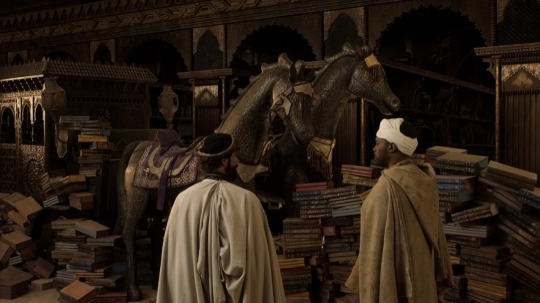

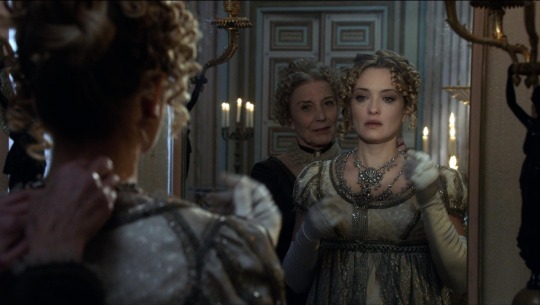






(I have found more pics about the film, but for thid post these are enough)
#de sable et de feu#sabbie e fuoco#sand and fire#el sueño del califa#el sueño envenenado#souheil benbarka#films#period dramas#rodolfo sancho#giancarlo giannini#carolina crescentini#marisa paredes#imanol arias#halid basket#omar azzouzi#marco bocci#massimo ghini#abdelaziz bouzaoui#kamal moummad#younés kerkour#christo jivkov#ulisse provolo#jean-pierre andré douay#domingo badía i leblich#ali bey al abbassi#hester stanhope#meleki of palmyra#slimane of morocco#sulayman of morocco#manuel godoy
8 notes
·
View notes
Note
DAMN Spain just won't let go of Gibraltar, huh? Are the Canary Islands, Ceuta, Melila not enough? If they care so much about Gibraltar being "illegally anexed" and "occupied" are they gonna return Olivenza, consering it was the exact same thing? The Catalan Countries + EH were also annexed by Castille, were they not? Will they also be granted independence? dw no need to answer, just wanted to comment on how absurd and ridiculous the Spanish government is. hopefully Spain wont exist by 2024
Cheers to that last sentence 🥂
The funniest part is that Spain got the Catalan Countries by the same treaty they lost Gibraltar, the Peace of Utrecht in 1713. If this treaty were to be cancelled, the Catalan-Aragonese Crown would be sovereign again.
10 notes
·
View notes